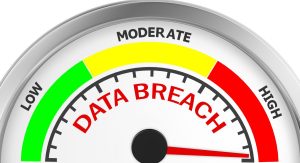While often confused and used interchangeably, a difference exists between security and protection within IT systems.
The key difference is that while security measures are focused on external threats to a system, protection is concerned with those that are internal.
Today, we’ll take a closer look at these two measures for safeguarding systems and highlight their differences.
Data protection
There are numerous benefits to protection. It enables staff to share common logical and physical address spaces safely. For example, in terms of logical address spaces, where a directory of data files must be shared by many users, protection methods like digital signatures and encryption can assist the process of safe sharing. Staff have specific authorisation to access the information they require to perform their role, but no more. In terms of physical address spaces within a system, different users can access a system’s memory, promoting effective use of resources.
Data security
Security is typically defined by three main attributes: availability, integrity and confidentiality.
Availability refers to the prevention of information being withheld by unauthorised actors; for example, during a ransomware attack. Confidentiality and integrity, meanwhile, are concerned with information remaining private, undamaged, and unaltered by malicious entities.
External threats are usually classed as indirect or direct. Examples of a random indirect threat may be a Trojan, worm, or computer virus, while a direct threat would be a targeted attack by a hacker.
How protection and security measures differ
While both have the same end goal of a safe and effective system, these methods are focused on different threats. Protection is a technique within systems designed to manages threats and maintain correct functionality. Security, on the other hand, is used to handle threats from outside systems to ensure the system functions properly
Policy, functionality, and mechanisms
A main difference between security and protection is policy. Carried out by the systems administrator, security policy decides whether an individual can be a user of a system. Protection policy, however, dictates whether that user is allowed to access particular data resources.
In terms of functionality, Security offers a mechanism designed to protect both user and system resources from unauthorised external entities. The mechanism provided by protection helps control access to data, processes, programs, and other resources. Protective measures are put in place as preventative measures to secure data and other resources. While this may involve setting permissions, it can also use more advanced safeguards such as encryption keys, electronic signatures, and data vaults. Security mechanisms against external threats can range from firewalls and antivirus, to simply deleting users no longer authorised to use systems.
Experts in protection and security
Whether you’re looking to safeguard the emails you send and store or the data you share and save on file, at Galaxkey, we have the tools you need.
If you require a cutting-edge encryption solution to protect the data you use and retain or are looking to employ e-signatures to limit access to information, contact us today and book a free trial of our most secure system, packed with innovative options to protect you company.



